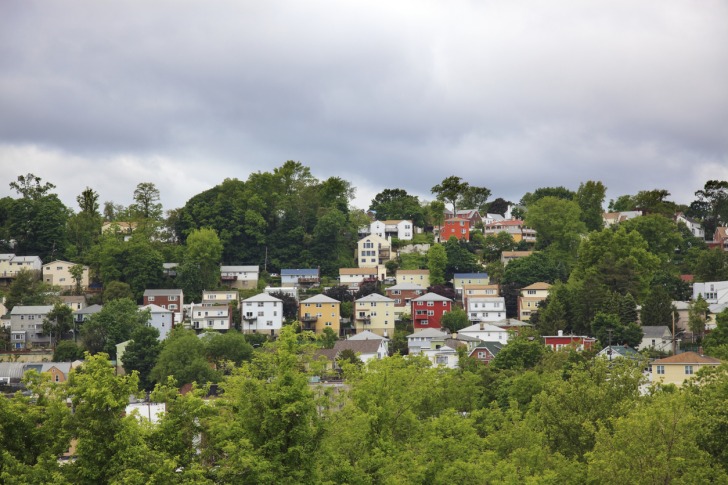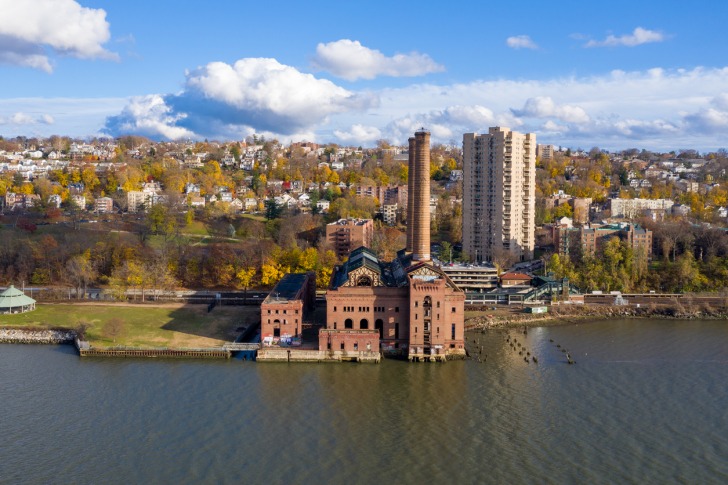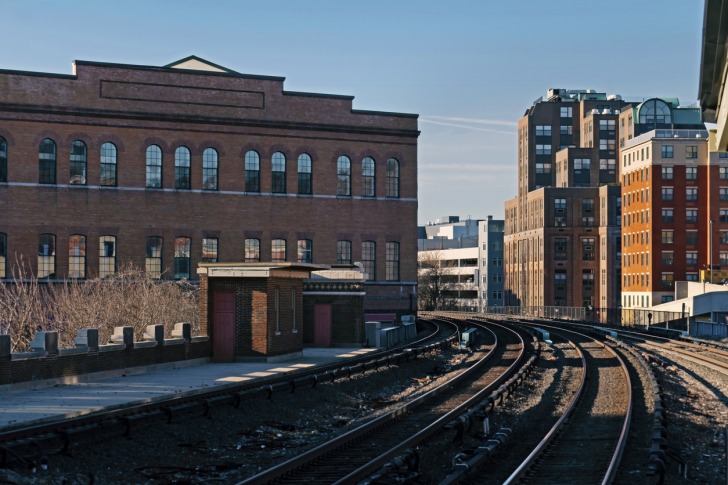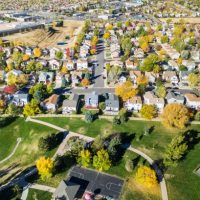Yonkers, New York is known as the Central City.
It was developed along the Hudson River, which is one reason that many residents enjoy living in Yonkers.
The city of Yonkers is the largest city in Winchester County.
It is the third-largest city in New York.
Yonkers serves as the gateway to New York City.
Some residents likely choose to live in Yonkers to avoid the congestion, hustle, and bustle of NYC.
People who consider moving to Yonkers should learn the pros and cons of living in Yonkers, New York before they move to the city.

Contents
Pros of Living in Yonkers, New York
1. Rich History
People who want to live in a city that has a rich history are likely to enjoy living in Yonkers, New York.
The city dates to colonial times.
The Sherwood House, which was built in 1728, is one of the oldest buildings in Yonkers.
The colonial architecture reminds residents of the city’s colonial past.
Yonkers is a city that played an important role in the Revolutionary War.
2. City with High Rankings
Yonkers often ranks as a great city to live in and to visit.
The city was recently named to the “Top 100 Best Places to Live” by Liveability.com.
Local leaders take pride in maintaining the city as a great place for both current and future residents.
There are grants of up to $10,000 for residents, groups, or organizations who support the continued improvements to the sustainability of Yonkers, NY.
3. Exciting Nightlife Scene
People who want to have great nightlife do not need to go to the “big city” of NYC.
Yonkers offers an exciting nightlife scene.
Check out the local dance clubs, or the trendy cocktail bars and lounges.
Visit a laid-back themed bar and grill, a movie theater, a casino, or a restaurant.
4. Great Public Transportation System
Park the car and take public transportation to work, for shopping trips, or to other destinations.
Uphomes.com indicates that Yonkers New York has the eighth-highest number of residents who choose to use public transportation when compared to other U.S. cities.
The public transportation system takes Yonkers residents straight into NYC and other nearby areas.
5. Livability
Yonkers scores high for its livability.
One site gives the city of Yonkers New York a grade of B for its livability.
Some factors considered when determining a city’s livability include the cost of living, education, crime rate, and the overall happiness of residents.
6. Housing Market
Yonkers, New York has a strong housing market, which is a bonus for people looking to move to Yonkers.
Current and future residents can find a home in many areas of the city.
They also have many types of properties to choose from when moving to Yonkers.
Choose a home that matches your lifestyle when you move to Yonkers, whether you want an apartment for singles, a single-family home to raise your family, or a larger size home to accommodate your growing family.
Singles, couples, families, and retirees are sure to find their ideal home in Yonkers, NY.
7. Desirable Location
The city of Yonkers is a desirable location for people who want to live in a thriving community.
Yonkers is a short train ride to Midtown Manhattan, or to other popular destinations.
The Yonkers, NY Downtown Waterfront area continues to grow, with new homes, apartments, and businesses overlooking the Hudson River.
Five major highways connect the city to other areas of the county, to New York City, and to areas beyond NYC.
8. Attractions and Things to See and Do
Yonkers is a vibrant city with many attractions and things to see and do for all ages.
The thriving arts and culture scene entertains and inspires residents and visitors.
The Hudson River Museum features historical and contemporary art and many exhibits that offer creative experiences.
Untermeyer Gardens showcases the flora and fauna of Yonkers.
There are several themed areas at Untermeyer Gardens.
Some examples include the Sundial Garden, the Rock Garden, the Walled Garden, and the Temple of Love.
Put on a skydiving suit and fly indoors at iFly.
The simulated flying experience provides the same feeling of weightlessness and the exhilarating feeling of flying that you would get if you were really on a skydiving experience or a flying adventure.
Yonkers delights families of all sizes and ages with its 55 Days of Fun during the summer months.
The city provides a wide variety of outdoor activities and fun for the entire family.
Enjoy music performances, theater screenings, a lot of food, and plenty of programs and activities that are especially for children.
Cons of Living in Yonkers, NY
1. Traffic Congestion
The proximity of Yonkers to New York City is a major factor in traffic congestion in and around Yonkers.
Traffic congestion is especially a factor during peak hours.
Allow extra time to get to work or school during peak hours of the day.
2. Cost of Living
The cost of living in Yonkers is an important factor to consider before moving to the city.
Yonkers has a higher cost of living than the state average and the national average.
The cost of living in Yonkers, New York is more than 20 percent higher than the cost of living in the state of New York.
It is 46 percent higher than the national average for cost of living.
3. Weather Issues
Residents of Yonkers endure the city’s weather, which includes high precipitation levels and cold temperatures.
The city gets an average of 50 inches of rainfall each year.
The amount of rainfall in Yonkers exceeds the national average rainfall, which is just 38 inches per year.
Yonkers also gets an average of 28 inches of snowfall each year.
The average winter temperatures dip well below freezing during the winter months.
The warmest month in Yonkers is the month of July.
The average temperature during July is 82 degrees Fahrenheit.
4. Population Density
Population density may contribute to environmental factors, which can have a negative effect on the residents of a city.
The U.S. Census Bureau lists the 2022 population of Yonkers at an estimated 208,121 residents.
The 2020 population per square mile in Yonkers in 2020 was 11,749.9.
Compare this to the population per square mile in 2010, which was 10,880.3 residents.
5. State and Local Taxes
People who live in Yonkers, New York need to know the state and local tax implications.
The state of New York imposes state taxes on residents.
Yonkers imposes its own city taxes on residents.
The taxes imposed on residents are based on their income brackets.
6. Public School System Rankings
Sites seem to vary in their ratings for the public school system in Yonkers, New York.
It receives an overall grade of B – from Niche.
Public School Review lists the school district in the bottom 50 percent of all 786 school districts in New York.
The reason is likely the test scores, which are lower than the proficiency test scores for the state of New York.
The scores indicate that 54 percent of students are proficient in reading.
Test scores show that only 41 percent of Yonkers students are proficient in math.
7. Commute Time to Work
Yonkers may have easy access to get where residents need to go, but the city does not have great commute times.
Residents need to plan ahead for a potentially long commute time.
The U.S. Census Bureau lists the average one-way commute time to work for residents in Yonkers as 34.3 minutes.
The commute time to work in Yonkers is lower than the state average commute time to work.
It is higher than the national average, which is just 27.6 minutes.
8. Crime Rate
The crime rate for Yonkers, New York is lower than the crime rate in many other cities.
Statistics show a recent increase in some types of crimes.
The number of burglaries increased from 208 per 100,000 people in 2019 to 276 per 100,000 in 2020.
The number of assaults and auto thefts also increased from 2019 to 2020.
The rate of robberies that occur in Yonkers is higher than the state average.

Pros and Cons of Living in Yonkers, NY – Summary Table
| Pros of Living in Yonkers, New York | Cons of Living in Yonkers, NY |
|---|---|
| 1. Rich History | 1. Traffic Congestion |
| 2. City with High Rankings | 2. Cost of Living |
| 3. Exciting Nightlife Scene | 3. Weather Issues |
| 4. Great Public Transportation System | 4. Population Density |
| 5. Livability | 5. State and Local Taxes |
| 6. Housing Market | 6. Public School System Rankings |
| 7. Desirable Location | 7. Commute Time to Work |
| 8. Attractions and Things to See and Do | 8. Crime Rate |
Yonkers Safety Overview
READ THE FULL REPORT: Yonkers Safety Review
Safety Index:
- OVERALL RISK: MEDIUM
- TRANSPORT & TAXIS RISK: LOW
- PICKPOCKETS RISK: MEDIUM
- NATURAL DISASTERS RISK: LOW
- MUGGING RISK: MEDIUM
- TERRORISM RISK: MEDIUM
- SCAMS RISK: MEDIUM
- WOMEN TRAVELERS RISK: LOW
Frequently Asked Questions
Is Yonkers a city that is known for its diversity?
The population is diverse in Yonkers.
The population is 46.3 percent white, 40 percent Hispanic or Latino, and 18.7 percent black or African American.
The population of Yonkers also includes 9.2 percent of residents who identify as more than two races, and 5.9 percent Asian residents.
What is the education level of residents who live in Yonkers?
Nearly 83 percent of the residents of Yonkers, New York graduated from high school.
The city also boasts the fact that nearly 35 percent of its residents have a bachelor’s degree or higher education.
Is Yonkers a good place for seniors?
Yonkers, New York is a great place for residents of all ages.
The population of Yonkers includes nearly 17 percent of residents who are 65 years of age or older.
Seniors find many activities to keep them engaged in the community.
Are there any colleges or universities located in Yonkers?
There are several colleges and universities located in Yonkers, NY.
Manhattan College, Westchester Community College, and Sarah Lawrence College are some examples.
Yonkers is near the Julliard School, Columbia University, and New York University.
Is Yonkers a walkable city?
Many residents leave their vehicles at home and take public transportation or walk to work, school, or stores.
The city is very walkable, with opportunities to see and do things along the way.











